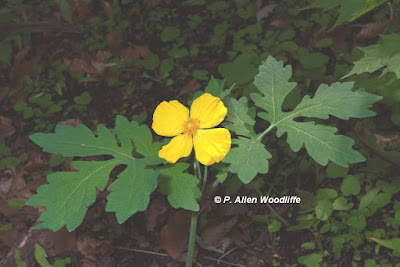The Keith McLean Conservation Lands continues to be a draw for so many birds. There are currently at least 207 species of birds recorded for this relatively small site, which has only been accessible for the last 5 years!
Just a few days ago a Glossy Ibis appeared. And yesterday came the report of a pair of Black-necked Stilts. Of course the very high water that has flooded some of the fields along the creek system has created super habitat for such birds. In fact there are typically more shorebirds in both numbers and diversity in these flooded fields than there has been at local sewage lagoons, which are traditionally a hot spot. Once the field dry up, that will change.
Needless to say, the presence of these stilts, normally a mid-western species, caused a lot of interest amongst the throngs of birders in the area. They weren't always close by, or in the best light, so in order to capture the photos below, I and several other photographers had to approach very slowly and carefully along the edge of the creek system in the opposite direction of the road.
This is a pair, as the male has the darker, black back and the female has a slightly browner back.
This is as close to the boundary of Rondeau that I am aware this species has come. I have seen them twice before within the park's checklist area, but one of those times was at the Ridgetown Sewage Lagoons and the other time, just last year, was at the Blenheim lagoons. If the birds like this spot, it is always possible, but not terribly likely, that they may even attempt to nest!
Not nearly as rare as the stilts, but just a 'regular rarity' is Summer Tanager. One or more occurs almost annually any more, but still draws a lot of attention. Just this last week or so, a young male has been seen in the vicinity of a very active cottage feeding area in the park. There are several hummingbird feeders as well as various suet, niger, sunflower and mixed seed feeders spread out along the Lakeshore Road side of the cottage, so there is a lot to attract birds. Baltimore Orioles and Rose-breasted Grosbeaks are common, as are numerous grackles and other blackbirds. The tanager has to be persistent to get anything it seems, but it does manage to get sustenance from both the suet and one of the sunflower feeders.
Endangered Species Act: At Risk
On another topic, and a very important one, it is interesting to know that today, May 17th, is Endangered Species Day, at least in the USA. It is ironic that here in Ontario where we have a relatively recently produced Endangered Species Act, 2007, it is undergoing a major revision. Not that it couldn't have undergone some tweaking to make a few improvements. But if a casual reader reads the general statements by politicians within the conservative government currently in power, one might think the proposed changes are an improvement. I will not refer to them as progressive conservative, the official name of the party, since at least based on environmental issues it is anything but progressive. In fact in spite of the wording of the proposed revisions it is a very poor attempt to make one think the gov't knows what it is doing to benefit the endangered species. In reality it is making the current Act virtually meaningless, giving politicians almost carte blanche authority to remove any protections of legislated endangered species and their habitat.
If you are interested to see the list, along with photos, of the current species that are Endangered, Threatened or Special Concern under the Act, check out this site. Over the years when I was working within MNR on behalf of such species at risk, I contributed many photos. I think at last count I had over 40 photos of these species on this link, a few of which follow here.
 |
| Cucumber Magnolia |
 |
| Red Mulberry |
 |
| Drooping Trillium |
 |
| Nodding Pogonia |
 |
| Wood Poppy |
 | |||
| Eastern Hog-nosed Snake |
Lyme Disease Awareness Month
And finally, better late than never, May is Lyme Disease Awareness month. Ticks that are carriers of Lyme Disease are out in full force in many areas of Ontario and beyond. I have written several blog posts on the topic, since I have contracted Lyme Disease 6 times over the past 42+ years. The most extensive post can be found here. If you want more information, check it out, or one of the seven other posts (just go to the right hand side of the post page and under the heading 'Labels', scroll down and look for Lyme Disease). If you or your pets spend any time out doors, especially in the April-November period, please ensure you take extra precautions to reduce the likelihood of contracting this disease.
It is the Black-legged Tick, a.k.a. Deer Tick that is believed to be the primary carrier of Lyme Disease. It is about one-quarter to one-half the size of the more common American Dog Tick, a.k.a. Wood Tick.
 |
| Black-legged Tick |
 |
| American DogTick |








No comments:
Post a Comment